Rama Vadapalli
Design And Analysis Of Three-Output Open Differential with 3-DOF
Dec 21, 2021



Abstract:This paper presents a novel passive three-output differential with three degrees of freedom (3DOF), that translates motion and torque from a single input to three outputs. The proposed Three-Output Open Differential is designed such that its functioning is analogous to the functioning of a traditional two-output open differential. That is, the differential translates equal motion and torque to all its three outputs when the outputs are unconstrained or are subjected to equivalent load conditions. The introduced design is the first differential with three outputs to realise this outcome. The differential action between the three outputs is realised passively by a symmetric arrangement of three two-output open differentials and three two-input open differentials. The resulting differential mechanism achieves the novel result of equivalent input to output angular velocity and torque relations for all its three outputs. Furthermore, Three-Output Open Differential achieves the novel result for differentials with more than two outputs where each of its outputs shares equivalent angular velocity and torque relations with all the other outputs. The kinematics and dynamics of the Three-Output Open Differential are derived using the bond graph method. In addition, the merits of the differential mechanism along with its current and potential applications are presented.
Omnidirectional Three Module Robot Design and Simulation
Feb 19, 2020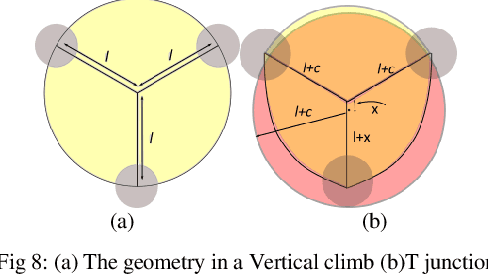
Abstract:This paper introduces the Omnidirectional Tractable Three Module Robot for traversing inside complex pipe networks. The robot consists of three omnidirectional modules fixed 120{\deg} apart circumferentially which can rotate about their axis allowing holonomic motion of the robot. Holonomic motion enables the robot to overcome motion singularity when negotiating T-junctions and further allows the robot to arrive in a preferred orientation while taking turns inside a pipe. The singularity region while negotiating T-junctions is analyzed to formulate the geometry of the region. The design and motion capabilities are validated by conducting simulations in MSC ADAMS on a simplified lumped-model of the robot.
Omnidirectional Tractable Three Module Robot
Sep 23, 2019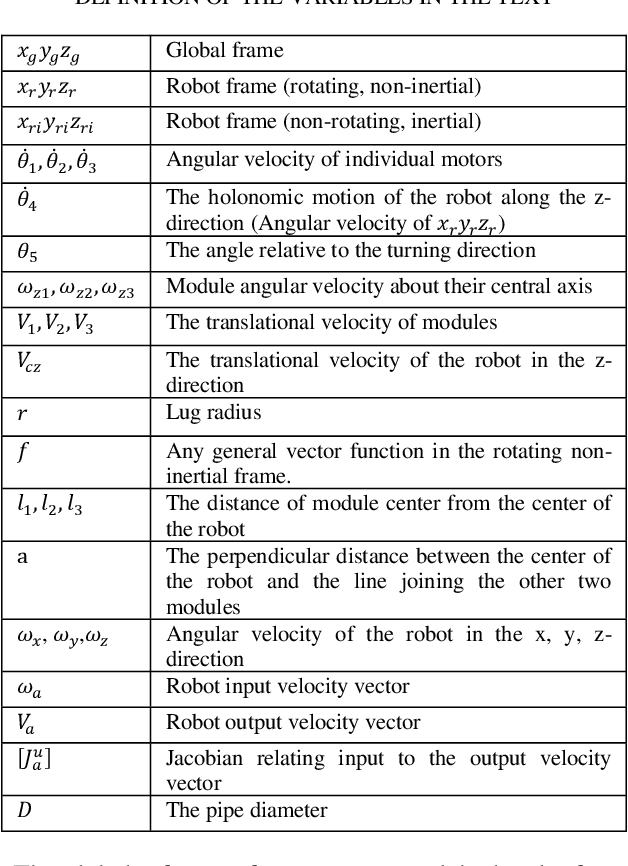
Abstract:This paper introduces the Omnidirectional Tractable Three Module Robot for traversing inside complex pipe networks. The robot consists of three omnidirectional modules fixed 120{\deg} apart circumferentially which can rotate about their own axis allowing holonomic motion of the robot. The holonomic motion enables the robot to overcome motion singularity when negotiating T-junctions and further allows the robot to arrive in a preferred orientation while taking turns inside a pipe. We have developed a closed-form kinematic model for the robot in the paper and propose the Motion Singularity Region that the robot needs to avoid while negotiating T-junction. The design and motion capabilities of the robot are demonstrated both by conducting simulations in MSC ADAMS on a simplified lumped-model of the robot and with experiments on its physical embodiment.
Modular Pipe Climber
Sep 23, 2019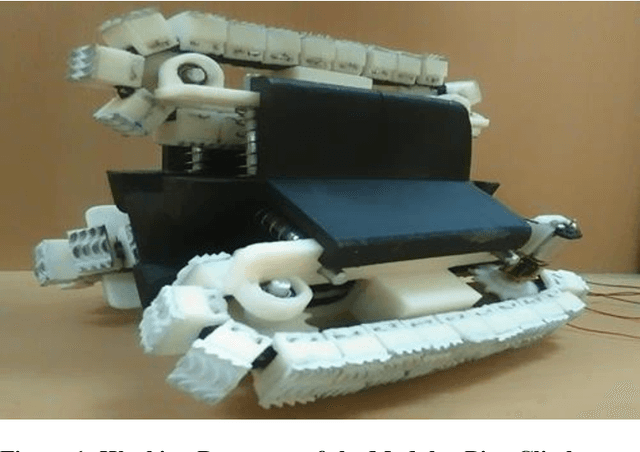
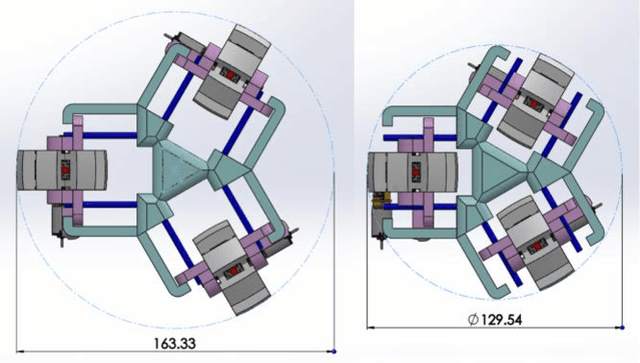
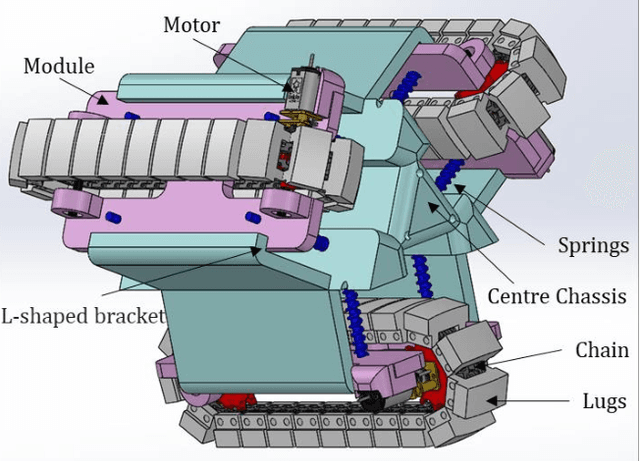
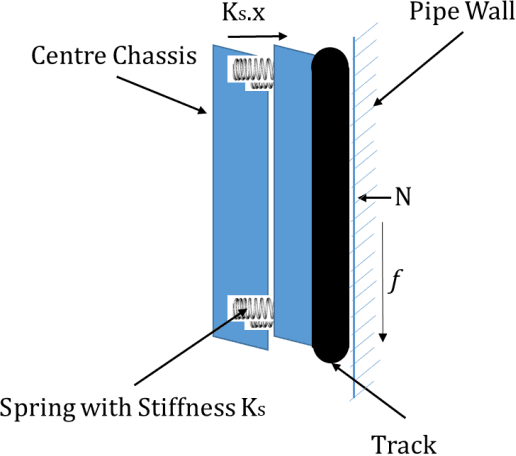
Abstract:This paper discusses the design and implementation of the Modular Pipe Climber inside ASTM D1785 - 15e1 standard pipes [1]. The robot has three tracks which operate independently and are mounted on three modules which are oriented at 120{\deg} to each other. The tracks provide for greater surface traction compared to wheels [2]. The tracks are pushed onto the inner wall of the pipe by passive springs which help in maintaining the contact with the pipe during vertical climb and while turning in bends. The modules have the provision to compress asymmetrically, which helps the robot to take turns in bends in all directions. The motor torque required by the robot and the desired spring stiffness are calculated at quasistatic and static equilibriums when the pipe climber is in a vertical climb. The springs were further simulated and analyzed in ADAMS MSC. The prototype built based on these obtained values was experimented on, in complex pipe networks. Differential speed is employed when turning in bends to improve the efficiency and reduce the stresses experienced by the robot.
 Add to Chrome
Add to Chrome Add to Firefox
Add to Firefox Add to Edge
Add to Edge